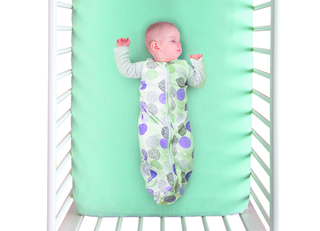Babies who sleep on their tummies have a higher risk of cot death.
It is not safe to place your baby on their side to sleep because they may roll onto their tummy.
Lay on back to sleep
Always lay your baby on their back, with their feet to the end of the cot. They should lie on their back every time they are put to sleep during the day and night.
As your baby grows, they will be able to roll from back to front and back again. Continue placing them on their back at the start of sleep time.
Important
Make sure everyone who looks after your baby uses the back to sleep position
No vomit risk
If your baby vomits or spits up while sleeping on their back, it will go back down their oesophagus.
The oesophagus is a long muscular tube that connects the throat with the stomach. It is underneath the trachea (windpipe). If your baby sleeps on their back it means gravity brings vomit back down to their stomach.
When babies are sleeping on their tummy, vomit will pool at the opening of their trachea. This makes it more likely your baby could choke.
Important
Putting your baby to sleep on their back does not increase the risk of choking if they vomit

Feet to the foot of cot
Place your baby to sleep with their feet to the foot of the cot, crib, moses basket or pram. This means they cannot wriggle down under the covers and suffocate.
Keep your baby's face and head uncovered
Tuck blankets in loosely but securely, no higher than your baby’s shoulders.
Check regularly to make sure your baby’s face and head stays uncovered. Your sleeping baby has a higher risk of cot death and suffocation if blankets slip over their face and head.